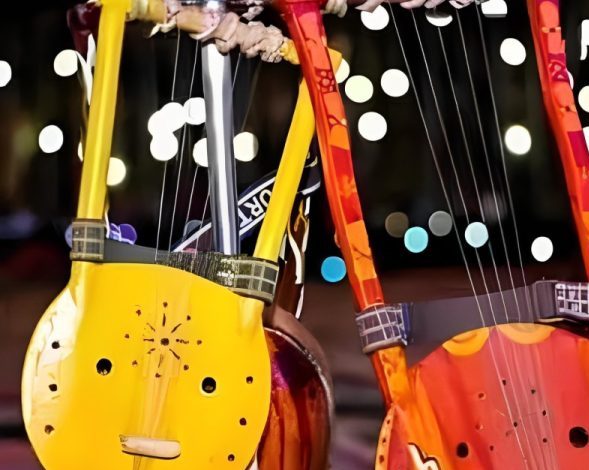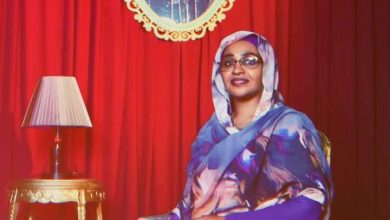Traditional instruments, Sudanese Identity

Sudan Events
Like many other African nations, Sudan boasts a wide range of traditional instruments. With 18 different states, more than 500 tribes and some 115 languages and dialects, it would be almost impossible to cover all the instruments associated with the plethora of Sudanese culture.
This article presents some instruments used in traditional Sudanese music – many of which can be found across the African continent in similar forms but with different names.
Tambour/rababa
The Sudanese tambour/tambur/tanbur or rababa is a bowl lyre known in Northern Sudan as kissar from the Nubian word, also used to refer to the cavity of a skull.
In other areas, it is known by different names: Basinco (East Sudan), abangaran (Angessana), kanjan/kassindi (Nuba Mountains), um bari (North Kordofan), kissir (Nubia) and tom (South Sudan). It is usually played in accompaniment with a larger instrument for bass and a smaller one as lead.
The guitar is said to be a descendant of the rababa. It is a five-stringed instrument that resembles the face of an animal. It consists of a hollow shell-like body (usually made from an old tin or carved-out wood that is flat on one side and round on the other) with a wooden or metal head for the top part. The five strings, made from nylon or metal, are tightened along the neck. Two holes that represent eyes are made in the resonator box/body.
Traditionally, craftsmen would use the face of an antelope to create the instrument and a tortoise shell for the body. Other sources say that the instrument resembles a horned cow with the two openings in the body representing the eyes. Tambur is also used in healing and Zar rites for women.
To play the tambour, the left hand is used to alter the notes while the right-hand fingers do the plucking.
Musicians who play the tambour include Abu Obaida Hassan, a prolific master of the instrument who added a sixth string and an amplifier to the instrument. He was believed to have died in the 2000s after disappearing, only to be tracked down by New York-based label Ostinato,
According to Okay Africa, Mohamed al-Nasri is another well-known tambour player who has captured millions with his heartfelt playing and tender lyrics.
More recently, Sudanese musician Noori received worldwide attention for his hybrid electric instrument called the ‘tambo-guitar’ or ‘krar’. Noori and His Dorpa Band released their album Beja Power! Electric Soul & Brass from Sudan’s Red Sea Coast in 2022 to critical acclaim on Ostinato Records.
Adongo
This harp/boat shaped instrument that has an attached bow with strings made from sheepskin. It is held on the lap with the neck pointing away, and has about two scales worth of strings. Like the tambour, the left-hand fingers are placed on the strings to change the notes while the right hand moves around to play the rhythm.
Umkiki
The umkiki, a one-stringed violin, has a resonator made from a gourd and a goatskin tightened around it. The string is tied around a support rod/bar and played using a bow.
Waza
The waza is a Sudanese horn often played in an ensemble of up to 13 players. It is used to usher in the harvest season and played during celebrations. Made from gourds, the instrument’s length may vary and can reach up to 2 meters. Waza playing goes along with a special kind of singing.



